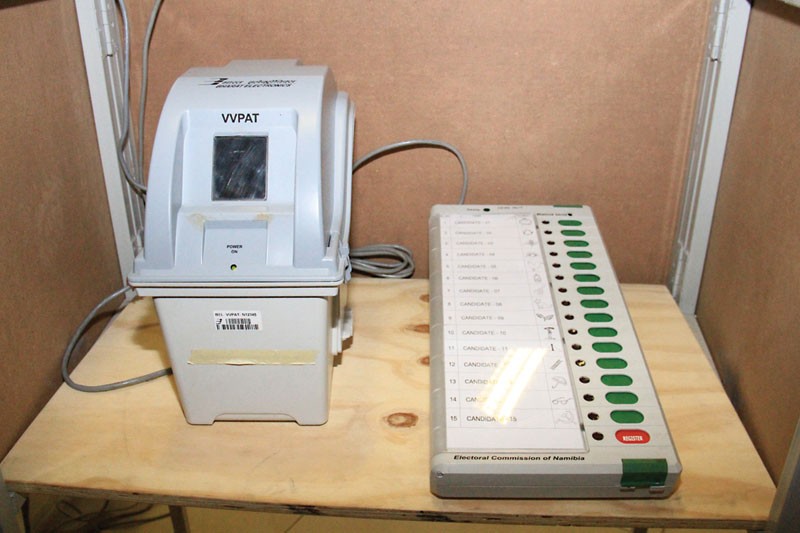Electoral Bill introduces EVM paper trail
Bame Piet | Thursday December 14, 2017 17:18


“The Bill introduces (a) VVPAT printer to ensure that votes are supplemented by a permanent paper record of each electronic vote for purposes of auditing electronic ballots,” says the Bill presented by the Minister of Presidential Affairs and Public Administration, Eric Molale. It further states that the introduction of VVPAT necessitated redrafting of the Amendment in order to synchronise the procedures for the EVM with the verification process provided by the VVPAT printer ballot slips.
It will distinguish the EVM voting procedure from voting by ballot paper, while it retains other provisions such as registration of voters, preparation of rolls, deletion of supplementary rolls, assistance of voters by election officers and increase in penalties.
The Bill prescribes procedure to be followed prior to casting of ballots, as well as post casting of ballots that include sealing of ballot containers and counting of ballots.
The VVPAT will have ballot slip compartment in which ballot slips are collected and will also allow the voter to view the ballot slip to ascertain if it reflects their vote. The VVPAT is capable of creating a paper record of all votes cast in a polling station and provide the serial number for each vote.
Prior to voting, election officers are required to inspect a clean or unused voting machine ballot paper in the presence of other stakeholders such as party representatives and polling agents.
The Bill reiterates that no person shall be appointed as a polling agent for any constituency unless his name appears in the voters roll for that constituency.
It also empowers the presiding officer to extend voting by two hours if the officer is satisfied that prevailing conditions would inhibit voters from casting their votes.
“He may permit the taking of the poll to continue for a further period not exceeding two hours beyond the closing time. Any votes cast within any period extended under this section shall not be held to be invalid solely on the grounds that the votes were cast during extended period.” Whilst the Bill retains many initial electoral practices and regulations, it fails to provide fair and transparent assistance for visually impaired voters.
“On the request in person of any voter who is incapacitated by blindness or other physical cause from voting, the presiding officer, in the presence of the person with whose assistance the voter came to cast his vote, shall cause the vote of the voter to be marked on a ballot paper in the manner directed by the voter, and the ballot paper be placed in the ballot box.”
The Bill emphasises a transparent process of checking voting machines, tabulators and VVPAT printers prior to any election in the presence of election agents and others recognised by the Independent Electoral Commission.
“A designated person shall load the symbols and names of contesting candidates, including the information into the VVPAT printer, print and hand the sample ballot slips to the returning officer for a first level quality check.”
VVPAT printers whose sample ballot slips are approved shall be considered to have passed first level quality check and ready to be used for the election.
At the counting centre, the Bill prescribes that the number of ballot slips should be equivalent to the electronic record.
